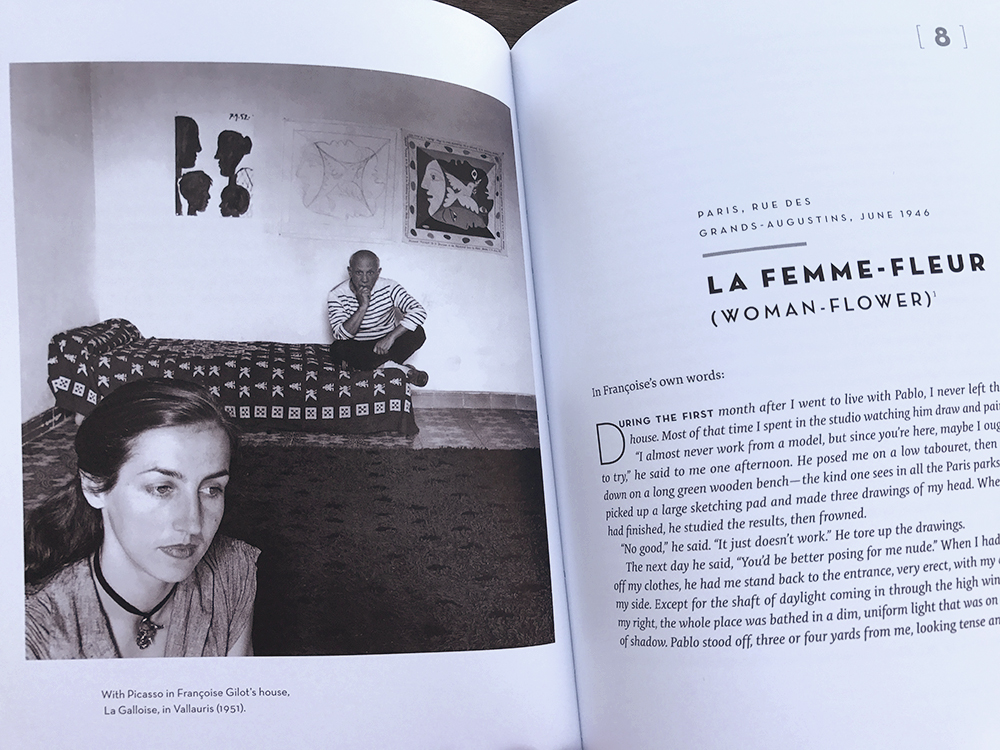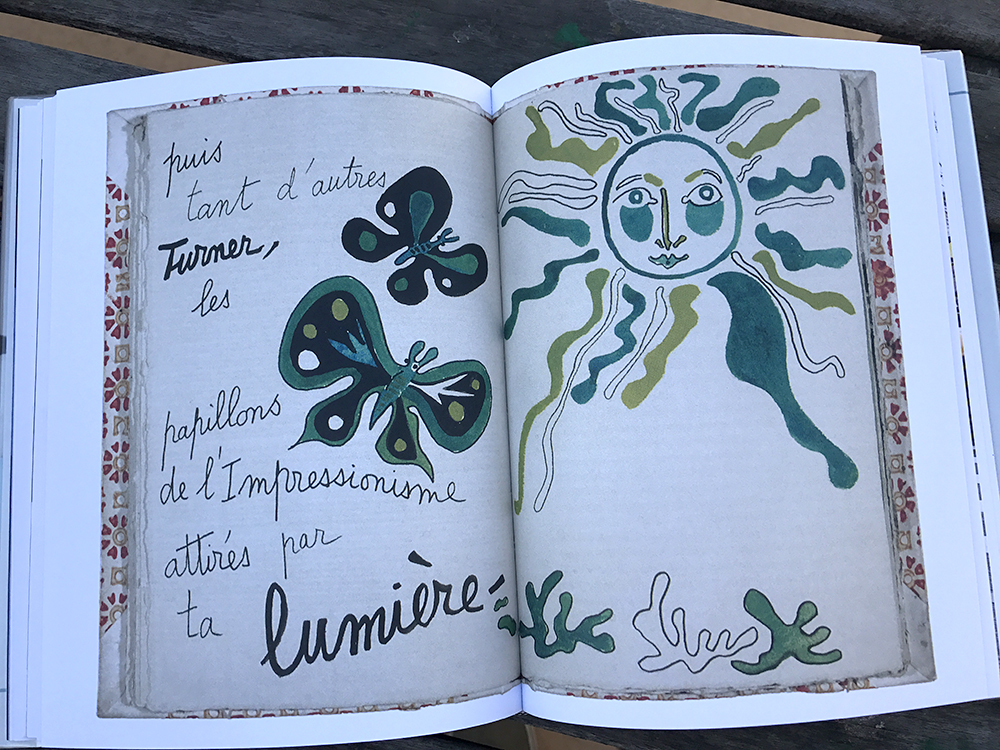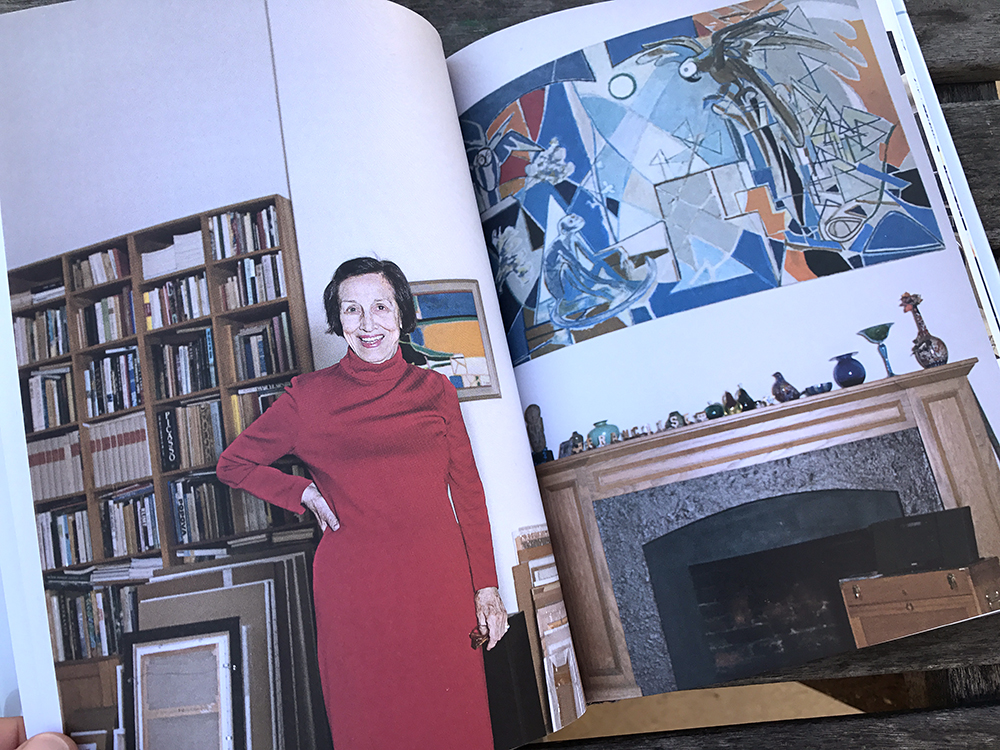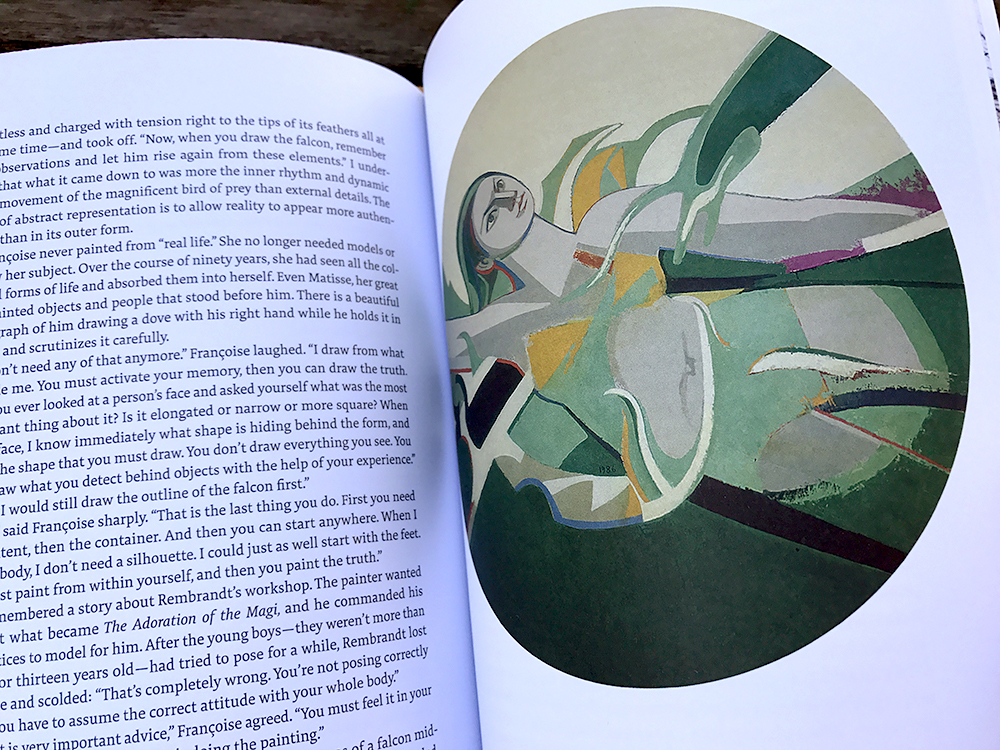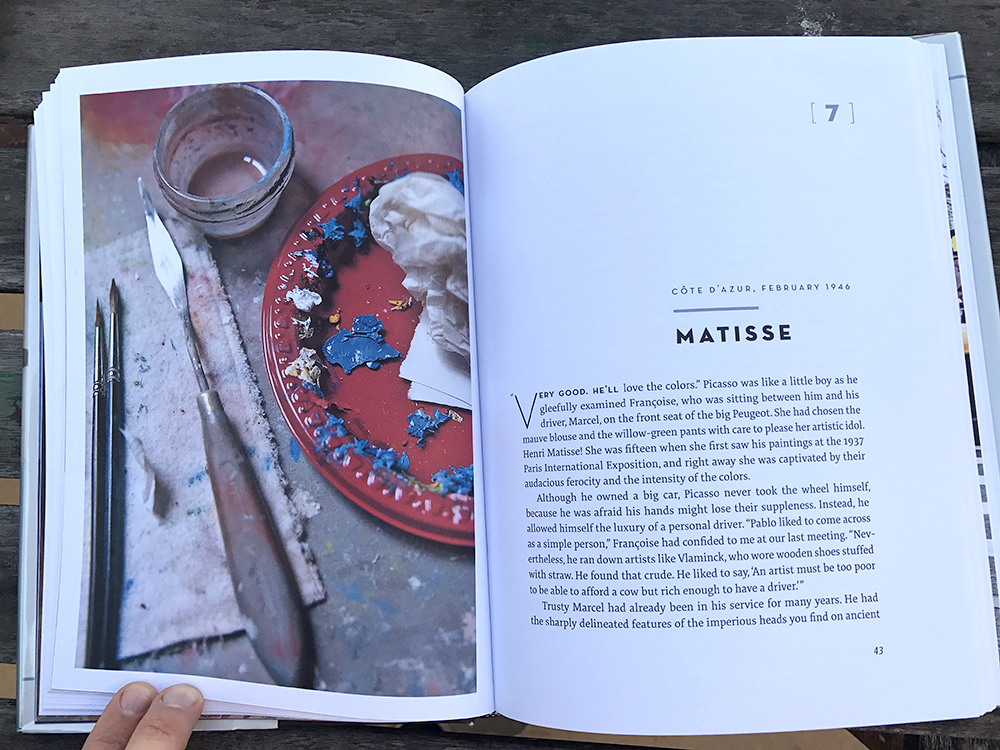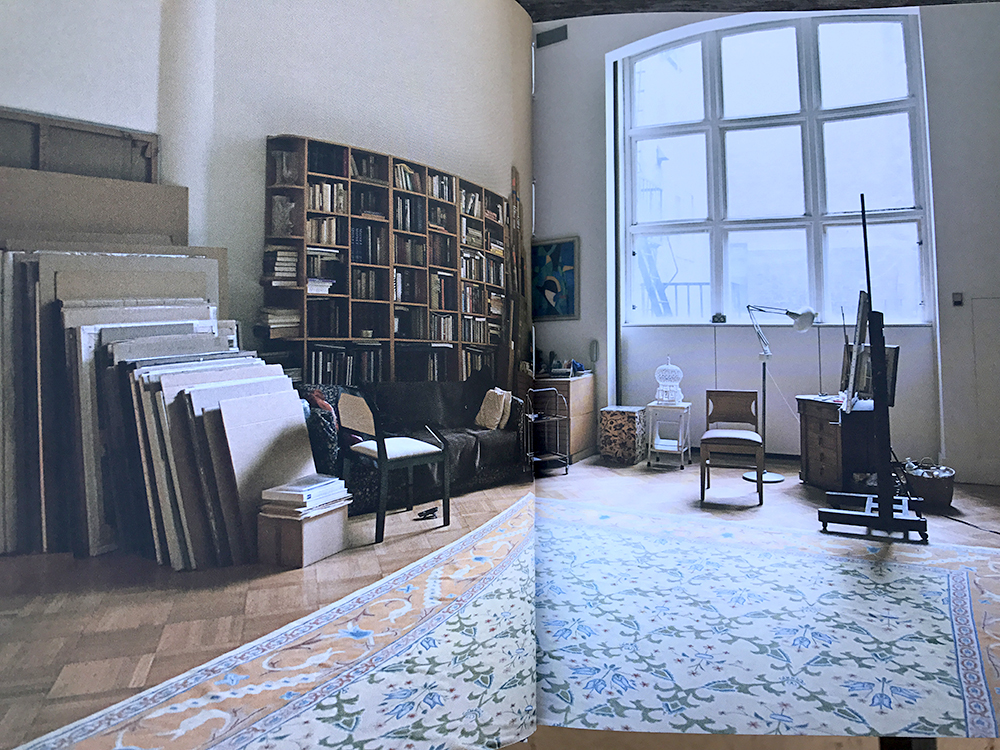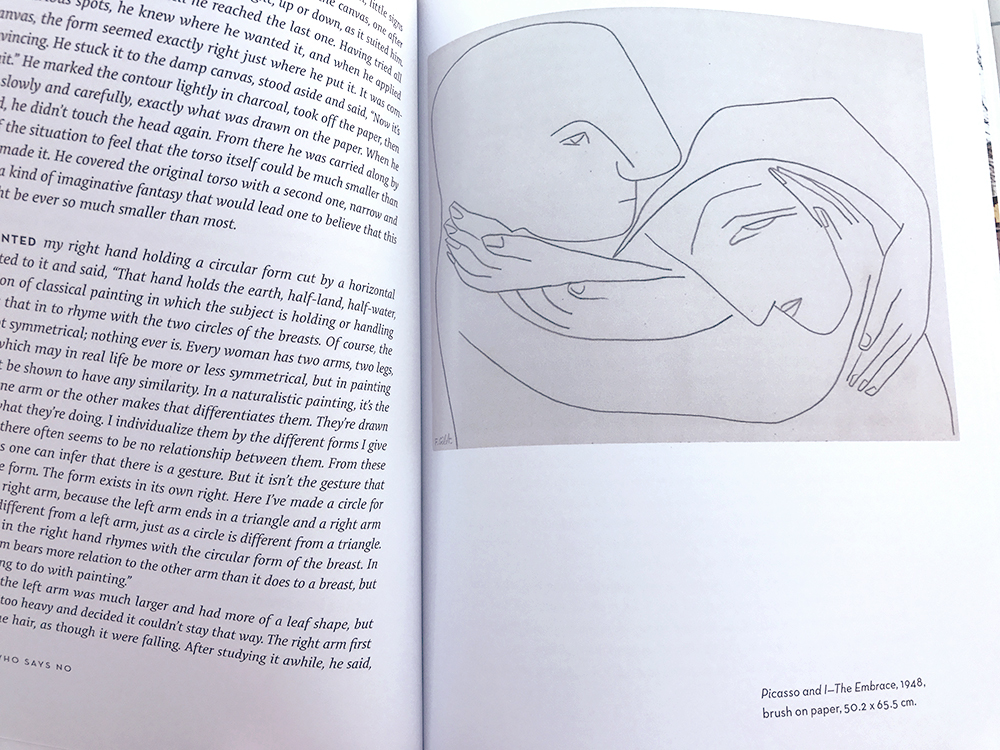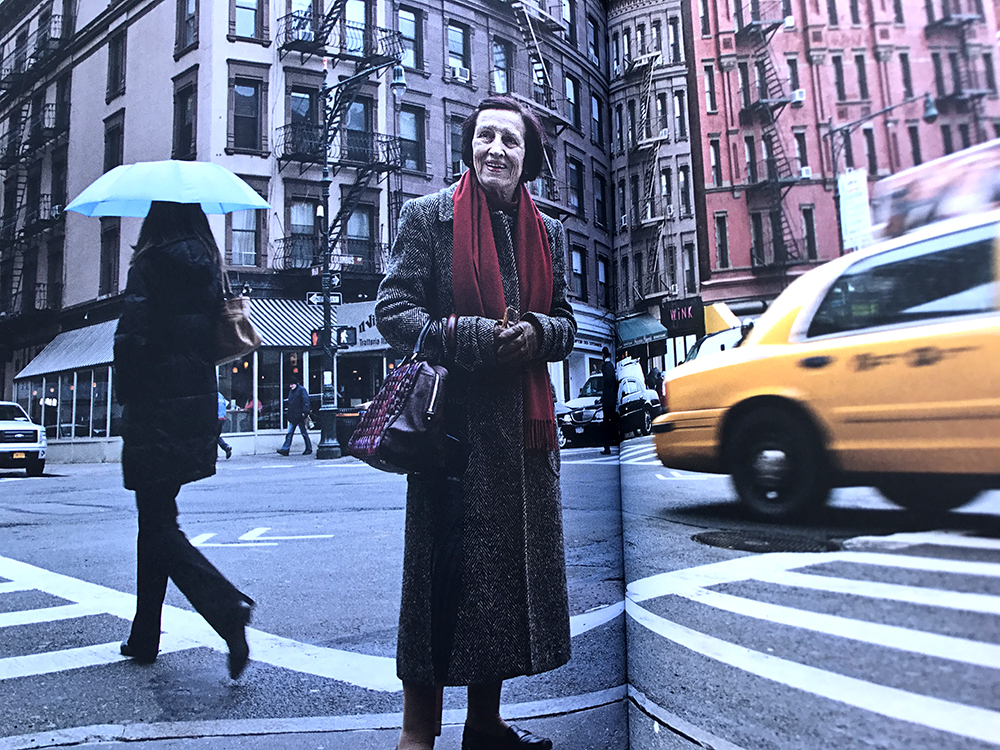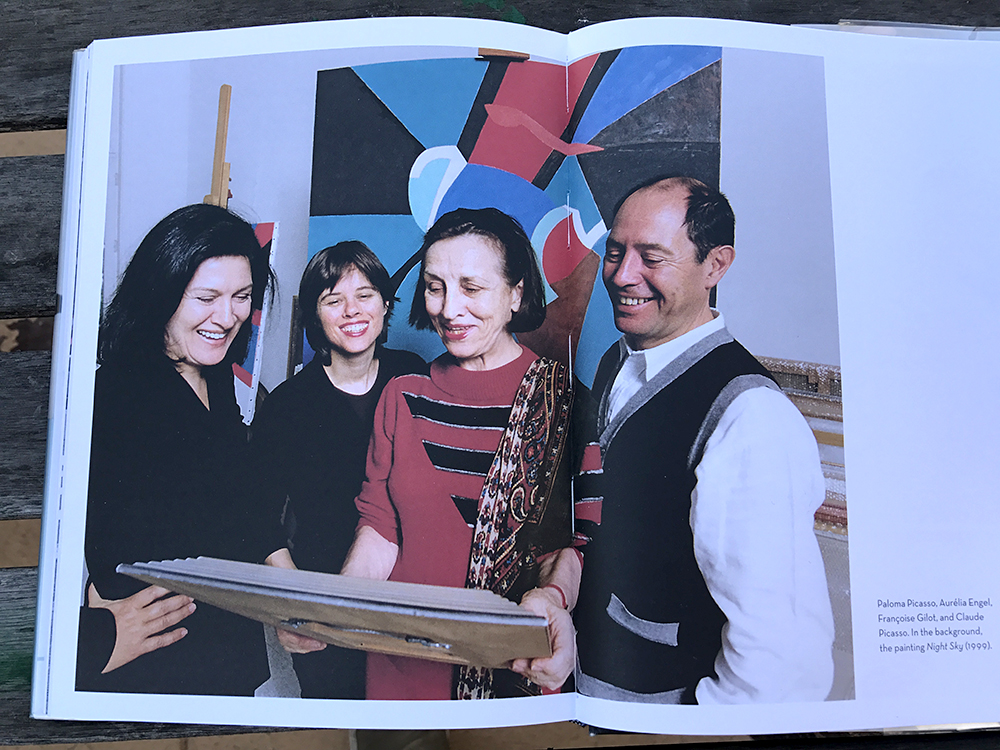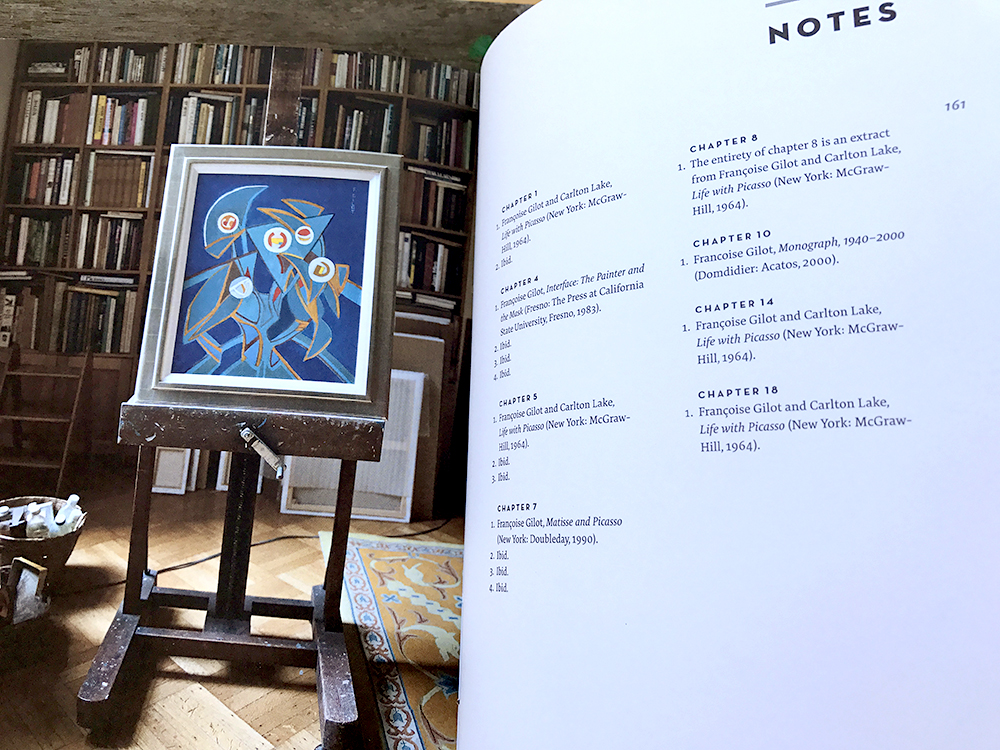The Woman Who Says No - Françoise Gilot on Her Life With and Without Picasso
Françoise Gilot is commonly known as the only of Picasso's partners to leave him, which makes her an intriguing character - a woman with the power to walk away. German journalist Malte Herwig shares a more in-depth portrait of this fascinating woman in a book of musings on his meetings with Gilot at her studio spaces in Paris and New York photographed beautifully by Ana Lessin. He shows us pieces of her past and where she's arrived now, still painting every day in her nineties. "It's the story about the adventures of a woman who lived among monsters and gods but refused all her life to be devoured or beautified."
Gilot speaks insightfully about painting, drawing and her philosophies on art and creation. She was taught to draw by her mother, who would not provide her the option of a pencil and eraser. She learned to draw in ink that could not be reversed. "You must learn from your mistakes instead of wiping them away. A false stroke or color applied too thickly must become part of a new composition, until everything fits together." This is also a rule for decisions made in life - what is done cannot be undone and we carry the past with us always but "what counts in the end is what you make of everything - life as artistic synthesis." There is an entire chapter titled "Mistakes" which digs into this concept on multiple levels and deserves re-reading. Using the practice of drawing as an exercise in letting go of fear is a wonderful lesson we see Herwig embrace.
Her father had wanted a son and decided to raise her the way he would a boy. He strove to make her tough and resilient against the difficulties of life. Herwig relates a story from Gilot's childhood where her father shut five-year-old Françoise inside a chimpanzee cage at a zoo for the laughter and amusement of the crowd. The ape took her hand and led her to sit at a small table where they looked out at the jeering people looking in, and she experienced a moment of shock and disgust with other people and a reversal of perspective. She felt that she was on the outside looking in at the monstrosity of human behavior, and she was awakened to a new level of understanding about life.
On her decision to become involved with Picasso, a man notorious for drawing inspiration from women and then destroying them, she says, "I knew it was going to be a catastrophe, but a catastrophe that would be worth living." Gilot was hungry for incredible experience. "If you want to really live, you must risk living on the edge; otherwise, life isn't worth it. When you open yourself to risk, you will also experience bad things, but mostly you will learn a lot and understand more and more. Most importantly, you will not be bored. The very worst thing is to be bored."
Reading this book feels like being in the room with Gilot. It is filled with warmth, humor and sharp insights on the art of living. She laughs at Herwig's assumptions while being welcoming and kind. She is quick to correct and offers alternative perspectives, "Ah but you can never avoid pain. It will find you one way or another. So you must try your best to approach your life in a different way." I find this statement courageous and incredibly sensible. To accept that tragedy will strike means to truly value the moments when things are good, and even lessen that pain a little by accepting its inevitability.
She touches on some of her learnings from her partnership with Picasso and recounts meeting Matisse: witnessing him make cutouts in bed and then effortlessly arrange them with the skill of a master. She eventually gives Herwig some drawing lessons and tips on how to see in order to be able to make confident marks. She talks about studying faces to see the shapes behind the forms. "First you need to be the content, then the container, and then you can start anywhere."
She describes a 5-year process of learning to meditate during the second world war in which she went to a friend's house once a week for an hour to contemplates different objects (and eventually nothing) until she was able to really be in a moment. After learning to do this she is now able to go into deep concentration on command - the level of concentration needed to master the artistic craft. "When you concentrate everything superfluous disappears and what is necessary becomes important." I loved listening to her describe her processes, and could pick this book up and flip to any page to get a little inspiration for living a more creative and focused life. The color images of her paintings, drawings, and workspaces add a level of visual beauty that I wish more biographies on artists had.
Gilot comes across as genuinely happy - a person who has taken big chances and come away content with her decisions, pleased that she always chose an ultimate path to freedom and self-knowledge.






